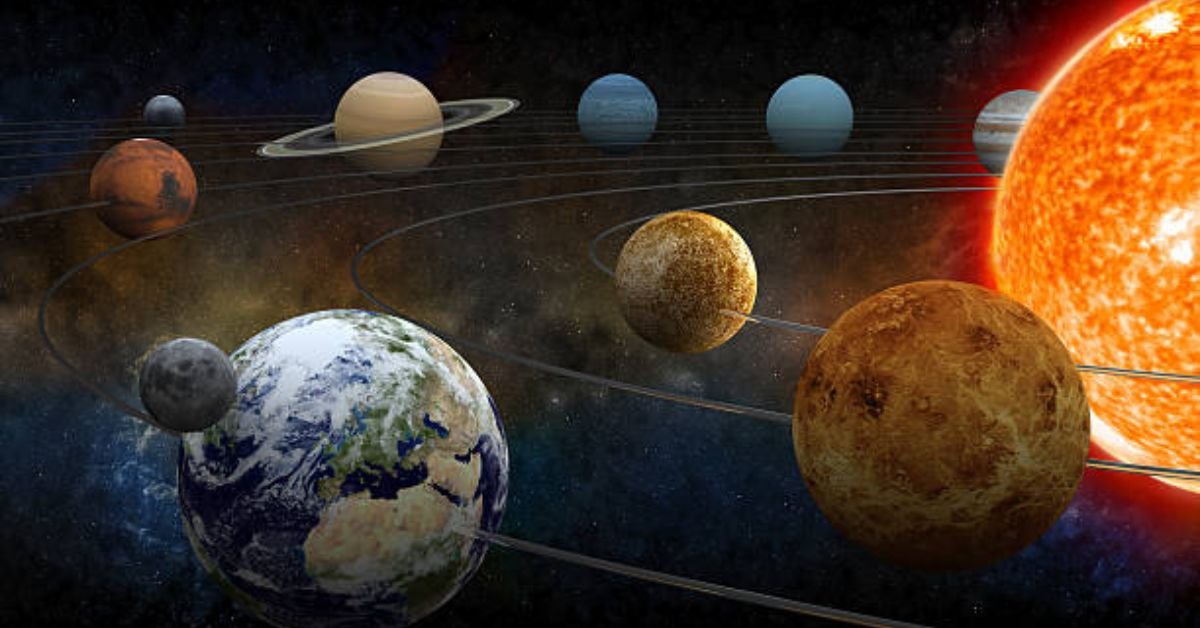Earth is 93 million miles (149.6 million km) from the Sun, how can we wrap our heads around a planet that’s 9.5 times farther away? It’s like trying to visualize driving non-stop for 700 years at 60 mph (96 km/h). Ready to demystify these astronomical numbers?
The Short Answer: A Whopping 1.4 Billion Kilometers (870 Million Miles)
Here’s the quick math:
- Saturn’s average distance from the Sun: 1.43 billion kilometers (or 890 million miles).
- That’s 9.58 Astronomical Units (AU), where 1 AU = Earth’s distance from the Sun.
In perspective:
- Light (the fastest thing in the universe) takes 1 hour and 20 minutes to travel from the Sun to Saturn.
- A spacecraft like Voyager 1 (launched in 1977) would take over 18 years to reach Saturn if it traveled in a straight line (which it doesn’t).
How Far Away is Saturn from the Sun in KM? Let’s Break It Down
Saturn’s orbit isn’t a perfect circle – it’s elliptical. Think of it like a stretched ring:
- Closest point (Perihelion): 1.35 billion km (839 million miles).
- Farthest point (Aphelion): 1.51 billion km (938 million miles).
Why does this matter? Seasonal changes on Saturn! Just like Earth has winter/summer, Saturn experiences extreme variations due to its tilted axis and vast distance from the Sun.

Saturn’s Distance from Earth: The Ever-Changing Gap
Here’s a fun fact: Saturn’s distance from Earth varies because both planets orbit the Sun at different speeds.
- Closest approach (Opposition): 1.2 billion km (746 million miles).
- Farthest distance: 1.6 billion km (994 million miles).
During opposition (every 378 days), Saturn shines brighter in the sky – a perfect time for stargazers!
A Real-Life “Aha!” Moment: “I Finally Understood Saturn’s Scale”
“I was teaching my kids about planets when we simulated a scale model solar system. We used a basketball for the Sun and a pea for Saturn, placing it 95 feet (29 meters) away. Suddenly, the ‘billions of kilometers’ made sense – it was empty space on steroids!”
Sound familiar? Visual aids (or scale models) are the secret sauce to grasping cosmic distances.
Saturn Facts: Beyond the Distance
Now that we’ve covered how far away is Saturn from the Sun, let’s dive into why this planet is legendary:
- The Rings: Made of ice, rock, and dust – stretching 175,000 miles (282,000 km) wide.
- Moons Galore: 146 confirmed moons, including Titan (larger than Mercury!).
- Stormy Weather: Winds up to 1,118 km/h (700 mph) – 10 times stronger than Earth’s hurricanes.
- A Gas Giant: 95 times Earth’s mass, composed mostly of hydrogen and helium.

How Long Does It Take to Get to Saturn? (From Earth)
Space agencies don’t exactly have a “Saturn Express” route, but here’s the math:
- NASA’s Cassini mission (1997–2017): Took 7 years to reach Saturn (with gravity assists).
- Voyager 2: 4 years to fly by Saturn (but didn’t enter orbit).
- Future crewed missions? Hypothetically, 6–8 years with current propulsion tech.
Frequently Asked Questions
Q: How long does it take sunlight to reach Saturn?
A: 1 hour and 20 minutes. Light travels 299,792 km/s (186,282 mi/s) – but Saturn is 1.43 billion km away!
Q: Is Saturn the farthest planet from the Sun?
A: Nope! Neptune holds that title (4.5 billion km). Saturn is 6th farthest of the 8 planets.
Q: Can humans travel to Saturn?
A: Not yet. Current rockets (SpaceX Starship, NASA SLS) aren’t designed for interplanetary human survival (radiation, distance, life support). Maybe 2080s?
Q: Why does Saturn have rings and not Earth?
A: Gravity + Ice Particles. Saturn’s strong gravitational field traps moon-sized chunks and microscopic dust. Earth? Too close to the Sun – our debris would evaporate or collide.
CONCLUSION
By now, “how far away is Saturn from the Sun” shouldn’t feel like abstract math. It’s a gateway to understanding:
- The scale of our solar system.
- Space exploration challenges.
- The uniqueness of Earth’s “Goldilocks zone” (not too hot, not too cold).
CLICK HERE FOR MORE BLOG POSTS
There’s a certain weight in the words John Authers writes—not just because of what he knows, but how he shares it. His voice doesn’t just echo facts; it builds meaning. In a world overwhelmed by rushed opinions and robotic summaries, John’s writing feels… different. It feels lived-in, thoughtful, and deeply human.
Readers don’t turn to John for headlines—they come for context. They come for that rare blend of clarity, insight, and emotional depth that turns financial journalism into something closer to storytelling. His reflections on markets, geopolitics, or human behavior aren’t just readable—they’re relatable.
What sets John apart isn’t just his experience (though he has plenty of it). It’s his ability to pause, reflect, and explain the why behind the what. He writes like someone who’s been in the room where it happens—but never forgets the reader who hasn’t.
In 2025, when AI churns out articles in milliseconds, John Authers still writes like a human—and that, more than anything, is what makes his work worth reading.











